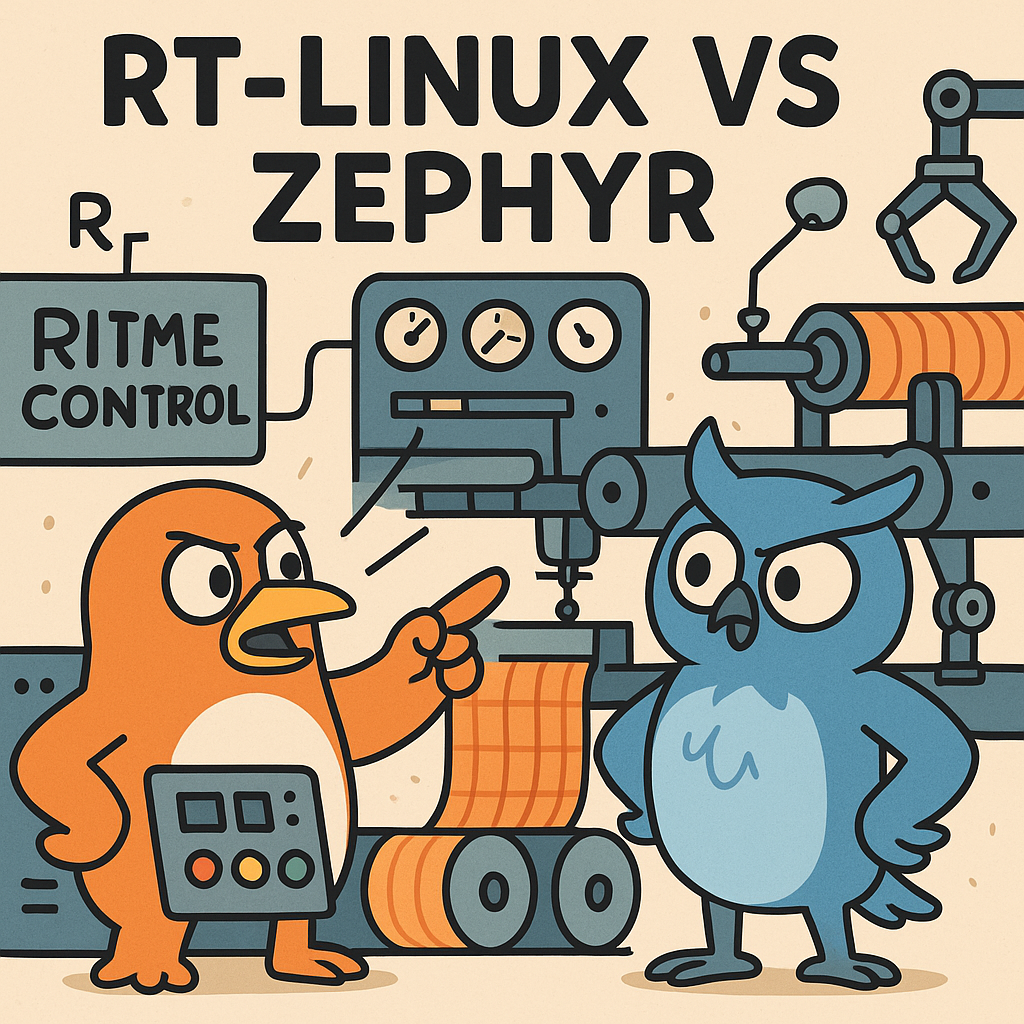Understanding Real-Time Operating Systems in Textile Manufacturing
In the realm of automated textile manufacturing, optimizing real-time control loops is crucial for maintaining efficiency and product quality. The choice of Real-Time Operating System (RTOS) can significantly impact the performance of control mechanisms. Two prominent contenders in this space are RT-Linux and Zephyr. This analysis aims to delve into the architectural nuances, design trade-offs, and practical implications of using these systems for real-time control loop optimization.
RT-Linux: Bridging Linux with Real-Time Capabilities
RT-Linux enhances the standard Linux kernel to support deterministic real-time performance. This is achieved by prioritizing certain tasks over others through preemption, allowing critical processes to execute without being delayed by non-critical tasks. This feature is especially beneficial in textile manufacturing where timing is essential for processes such as weaving and dyeing.
- Hardware Interaction: RT-Linux often runs on standard x86 or ARM architectures, making it versatile for various textile machinery. However, the reliance on a general-purpose operating system means there’s potential for jitter, particularly under heavy loads.
- Firmware Complexity: Integrating real-time capabilities into an existing Linux environment can complicate firmware development. Engineers must navigate the trade-offs between maintaining responsiveness and managing system resource overhead.
- Algorithm Optimization: Real-time algorithms implemented in RT-Linux benefit from extensive libraries and community support, but developers must ensure that these algorithms are optimized for low-latency execution.
Zephyr: Lightweight and Efficient for Embedded Systems
In contrast, Zephyr is designed from the ground up as a lightweight RTOS, catering specifically to IoT devices and embedded systems. Its modular architecture allows for streamlined performance, making it an appealing choice for control loops in textile machinery where resource constraints are common.
- Memory Footprint: Zephyr’s minimalistic design means it can run on microcontrollers with very limited memory. This is an advantage when implementing control loops directly on the machinery, reducing the need for complex hardware.
- Task Management: Zephyr uses a priority-based scheduling algorithm that ensures real-time tasks are executed promptly, which is vital in scenarios where sensor data needs to be processed instantly for effective control.
- Ease of Development: The simplicity of Zephyr’s API allows for rapid prototyping. Engineers can quickly iterate on control algorithms, which is essential in a fast-paced production environment.
Challenges in Control Loop Optimization
Both RT-Linux and Zephyr present unique challenges when it comes to control loop optimization. With RT-Linux, one of the main issues is managing the overhead caused by the Linux kernel. For instance, while the preemptive nature of RT-Linux allows critical tasks to run first, if not managed well, it can lead to context-switching delays, which are detrimental to time-sensitive operations in textile machines.
On the other hand, the challenge with Zephyr lies in its limited features compared to a full-fledged Linux environment. While it excels in low-power scenarios, the lack of certain Linux-based libraries can hinder the implementation of more complex algorithms that might be necessary for advanced control strategies.
Real-World Design Trade-offs
In practical applications, the decision between RT-Linux and Zephyr often hinges on the specific requirements of the textile manufacturing environment. For instance, if a machine requires complex data processing and integration with existing Linux-based systems, RT-Linux might be more appropriate despite its overhead. Conversely, if the priority is on low-latency performance with minimal resource usage, Zephyr would be the clear choice.
Additionally, engineers must consider the lifecycle of the machinery. Upgrading an existing system to RT-Linux could involve substantial investment in both time and resources, whereas adopting Zephyr could enable a more agile development process with lower costs.
Conclusion: Choosing the Right Tool for the Job
Ultimately, the decision between RT-Linux and Zephyr for optimizing real-time control loops in textile manufacturing isn’t straightforward. It requires a careful assessment of the specific operational demands, resource constraints, and long-term maintenance considerations. In many cases, the best approach may involve a hybrid solution, leveraging the strengths of both systems to meet the evolving needs of smart textile manufacturing.



